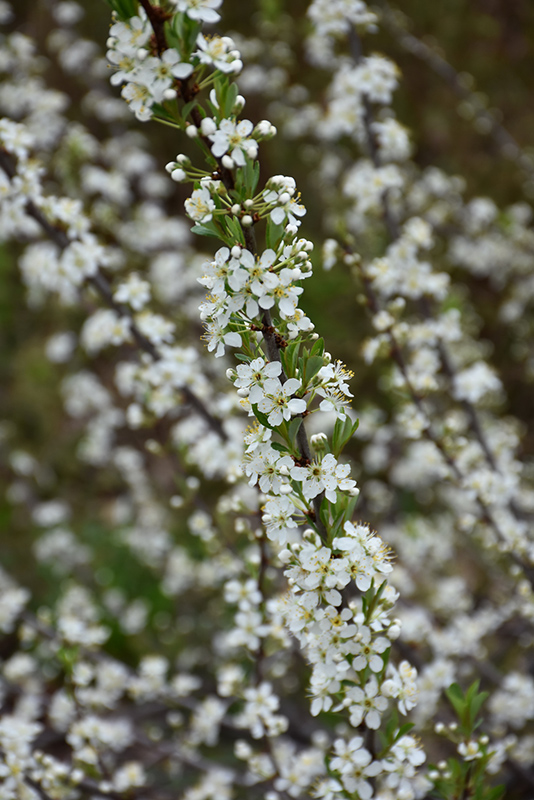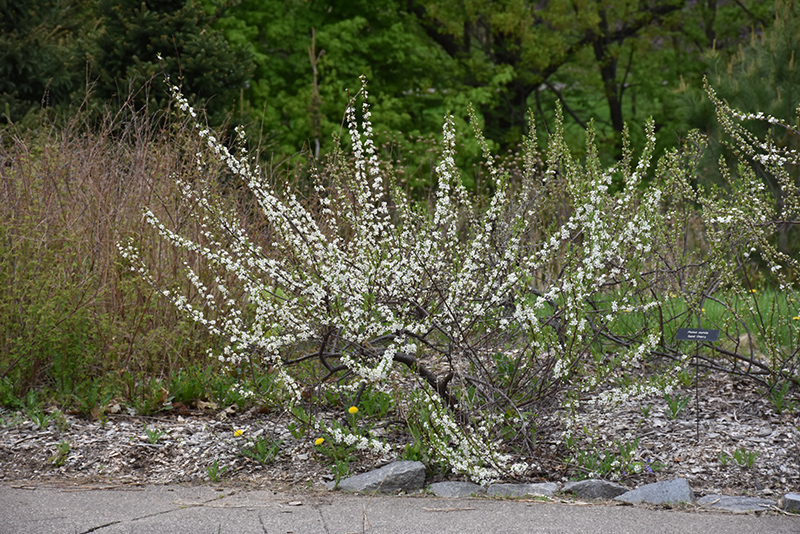Brunswick
422 Bath Road
Brunswick, ME 04011
1-800-339-8111
207-442-8111
Falmouth
89 Foreside Road
Falmouth, ME 04105
1-800-244-3860
207-781-3860
Cumberland
201 Gray Rd (Route 100)
Cumberland, ME 04021
1-800-348-8498
207-829-5619
Height: 6 feet
Spread: 6 feet
Sunlight:
![]()
Hardiness Zone: 2b
Other Names: Sandcherry
Description:
A medium-sized ornamental shrub featuring showy white flowers in spring followed by tart black cherries in summer, good for jams; low growing and wide spreading with good fall color; very hardy and adaptable, excellent for dry locations
Ornamental Features
Sandcherry is clothed in stunning clusters of fragrant white star-shaped flowers along the branches in mid spring before the leaves. It has grayish green foliage with silver undersides. The pointy leaves turn outstanding shades of brick red and in the fall. The fruits are showy burgundy drupes with black overtones, which are displayed in mid summer.
This plant is primarily grown as an ornamental, but it's also valued for its edible qualities. The small round tart fruit is most often used in the following ways:
- Preserves
Landscape Attributes
Sandcherry is a multi-stemmed deciduous shrub with a more or less rounded form. Its relatively fine texture sets it apart from other landscape plants with less refined foliage.
This is a relatively low maintenance shrub, and is best pruned in late winter once the threat of extreme cold has passed. It has no significant negative characteristics.
Sandcherry is recommended for the following landscape applications;
- Mass Planting
- General Garden Use
- Orchard/Edible Landscaping
Planting & Growing
Sandcherry will grow to be about 6 feet tall at maturity, with a spread of 6 feet. It tends to fill out right to the ground and therefore doesn't necessarily require facer plants in front, and is suitable for planting under power lines. It grows at a medium rate, and under ideal conditions can be expected to live for approximately 20 years. This is a self-pollinating variety, so it doesn't require a second plant nearby to set fruit.
This shrub should only be grown in full sunlight. It is very adaptable to both dry and moist growing conditions, but will not tolerate any standing water. It is considered to be drought-tolerant, and thus makes an ideal choice for xeriscaping or the moisture-conserving landscape. It is not particular as to soil pH, but grows best in sandy soils. It is highly tolerant of urban pollution and will even thrive in inner city environments. This species is native to parts of North America.
For 2025
We will have Prunus pumila 'Gus Melquist'- a prostrate form creeping low along the ground.


